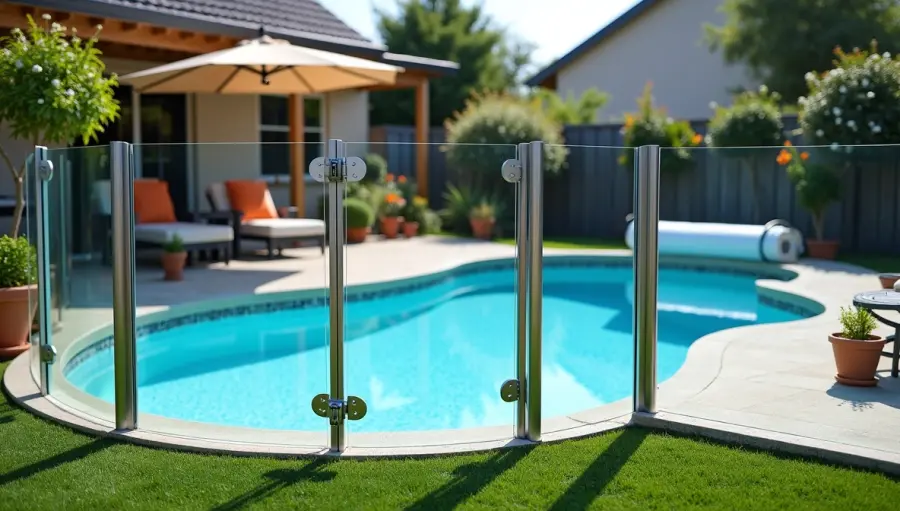
Secure Your Splash Zone: Essential Fencing and Barriers for Pool Safety
Protecting Your Family and Friends: A Deep Dive into Pool Safety Solutions

Secure Your Splash Zone: Essential Fencing and Barriers for Pool Safety
Protecting Your Family and Friends: A Deep Dive into Pool Safety Solutions
Dive into the crucial topic of pool safety in our detailed guide. Discover a variety of fencing and barrier options, explore materials suited for your needs, and familiarize yourself with regulations to ensure your pool area is both secure and visually appealing.
1. Introduction to Pool Safety
Tragic accidents related to pools are more common than one might think, with the CDC highlighting drowning as a leading cause of unintentional death among children. Pool safety is not merely about legal compliance; it's about creating a safe haven where your loved ones can enjoy the water without fear. By implementing effective safety measures, you gain peace of mind knowing you are protecting what matters most.
2. Understanding Regulations and Standards
Navigating the maze of local, state, and national regulations regarding pool fencing is essential for every pool owner. These laws often specify the minimum height for fences, the types of materials permitted, and critical features like self-closing gates. Understanding and adhering to these standards not only enhances safety but also shields you from potential legal issues, fines, or liability claims in the unfortunate event of an accident.
3. Types of Fencing Solutions
When selecting a pool fence, consider the various materials available:
- Aluminum: Known for its durability and low-maintenance nature, aluminum fences are lightweight but may lack privacy.
- Vinyl: Available in diverse styles and colors, vinyl offers a modern look, though it may fade over time.
- Wood: This classic option provides aesthetic appeal and privacy, but it requires regular maintenance to prevent rot and wear.
- Glass: For an unobstructed view of your pool area, glass fencing is an excellent choice, albeit a more expensive option that necessitates careful upkeep.
Evaluate both permanent and removable fencing options based on the type of pool you have. In-ground pools typically benefit from permanent barriers, while above-ground pools might allow for removable solutions. Additionally, consider the design and aesthetics of your fencing to ensure it enhances your backyard's overall look.
4. Barrier Innovations and Technology
Innovative technologies are reshaping the landscape of pool safety. For instance, self-closing gates are a vital feature that guarantees access points remain secure after use. Pool alarms offer an added layer of protection by alerting you when someone enters the pool area without permission. Furthermore, mesh pool safety nets have emerged as effective barriers that can prevent unauthorized access, making them a smart choice for proactive safety measures.
5. Landscaping and Natural Barriers
Did you know that landscaping can serve as a natural barrier to enhance pool safety? Thoughtfully placed shrubs and plants can create both physical and visual obstacles, reinforcing the security of your pool area. When designing your landscaping, consider incorporating thorny plants or dense foliage to deter access while adding beauty to your outdoor space.
6. Maintenance and Upkeep
To ensure ongoing safety, regular maintenance of your pool barriers is essential. Here’s a handy checklist to guide you:
- Inspect fences and gates for any signs of damage or deterioration.
- Confirm that self-closing mechanisms are functioning as intended.
- Ensure locks or latches are secure and operational.
- Clear away any debris that might obstruct gates or barriers.
Don't forget to consider seasonal maintenance as well, preparing your fences for winter weather and ensuring they are ready for summer use.
7. Educating Family and Friends
Education plays a pivotal role in ensuring pool safety. All users of the pool should be well-versed in essential safety practices, such as swimming skills and emergency response protocols. Engage children in important safety discussions to instill a sense of responsibility and awareness about the dangers associated with water, fostering a culture of safety for everyone involved.
8. Conclusion and Call to Action
In summary, securing your pool area is not just a precaution; it's a commitment to the safety of your family and friends. Take the time to assess your current pool safety measures and consider implementing upgrades or new installations to bolster protection. A safe pool environment allows for enjoyment, relaxation, and peace of mind, making it a truly responsible choice for any homeowner.